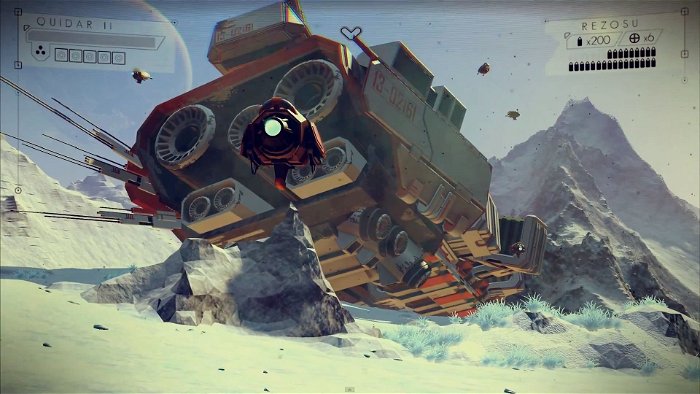You can say a lot of things about last weekend’s VGX, but the one thing you cannot say is that you saw No Man’s Sky coming. No one did. And how could they? Even though this game currently exists as a two minute trailer, the promise of that trailer and subsequent commentary from the one of the developers, Sean Murray, packs in more surprises than the average the AAA developer is allowed to create over the course of an entire fiscal year.
No Man’s Sky is, at its heart, a science fiction game. But, and here’s the rub, the roots of this game’s science-fiction is ACTUAL science-fiction, as in, the literary genre, as opposed to the futuristic-action-movie coat of paint that cinema has taught people to expect when they hear the phrase. This is not a game about space marines, corridors, and first person or 3
person cover-based shooting. This is a game about exploration, and engaging the player’s curiosity. As Sean Murray himself said during his time at VGX, this is more about the kinds of covers SF readers saw in novels in the bookstore; with alien vistas, mysterious crashed ships and unfamiliar skies with new planets hanging in the distance. This isn’t the Wachowski sibilings and James Cameron, this is Asimov, Clark and Heinlein.
No Man’s Sky is about showing you unexplored horizons, making you ask the question “What’s out there?” and then allowing you to GO THERE.
The crux of the game—and the thing that allows it to be created by only four people, an astounding feat in and of itself—is that the content of the game is entirely procedurally generated. That means that all the worlds, and all the things in them, are randomly created by the software. You literally do not know what kind of world you are going to stumble upon, NOBODY does, because it wasn’t created in advance.

The most promising thing about No Man’s Sky, is that this classic SF approach means the game is more about exploration than it is about kill/death ratios. There are still a lot of details forthcoming about the exact nature of the game, but what’s been revealed so far is that all players start out at the edge of a virtual galaxy, with the ultimate goal of reaching the galactic core. Along the way, players will scout out new planets, gathering resources to upgrade their ship, which in turn will allow them to better survive the trials of combat and travel greater distances.
Players also have the option of “sharing” the planet they find, meaning that they can publicly display the planet, with full credit given to them for its discovery. However, due to the persistent, online nature of the game, revealing a planet rich in resources, could mean allowing other players to visit the planet and wring it dry of all those usable, but finite resources.
There’s still no word on when the game will be out, or even what platforms it will release on, aside from a nebulous “Next gen” comment at VGX. But this game, like Star Citizen marks an exciting turn for science fiction fans in gaming. For many years now, SF gaming has been more about guns than it has about ideas, exploring new frontiers, or even just satisfying curiosity about “What’s on the next planet?” It’s been less about the star ships and voyages and more about the gun in your hands and the aliens you kill. This new generation of hardware and games that we find ourselves at threshold of is finally taking some steps to address the broader world and ideas of proper, literary science fiction. That might not sit well with people that just want to shoot aliens, but for people that fell in love with technology in the first place because of the possibilities they read about in novels, this is a welcome return to form.




